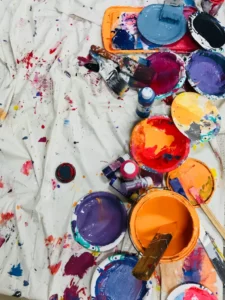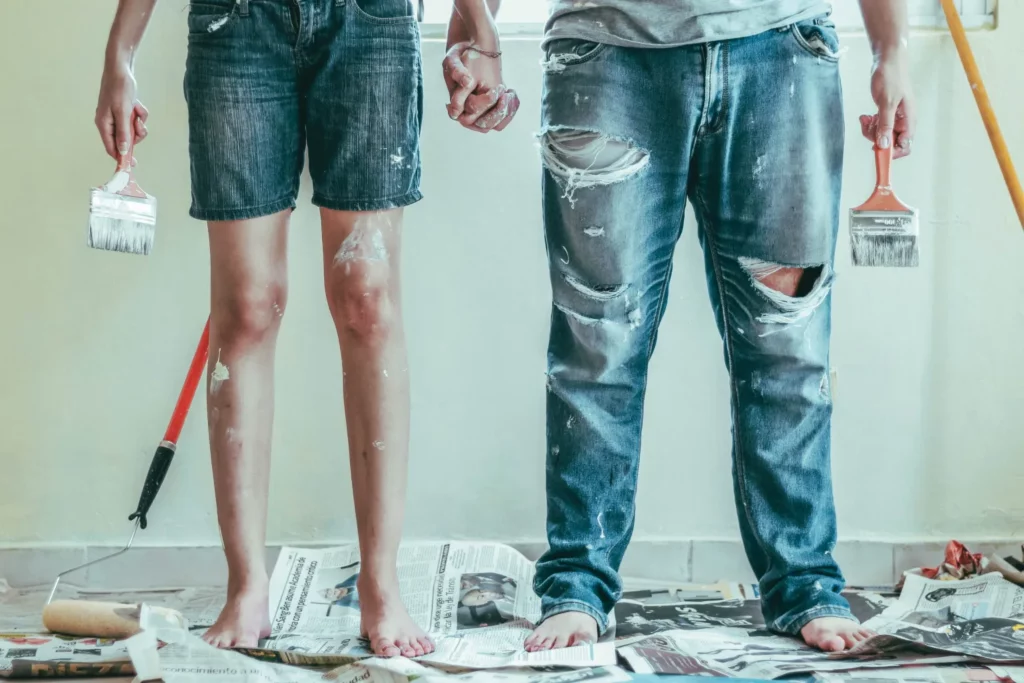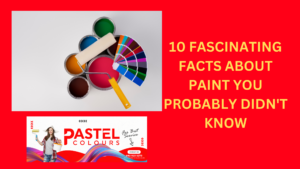What is paint and what is it made up of?
Paint is a mixture of four basic ingredients: pigments, resins, solvents, and additives. Pigment is the colour, and resin is the binder – or glue. Solvent is the carrier that makes it all liquid and evaporates as the paint dries. Additives provide specific performance characteristics, such as stain-blocking or mold-killing properties.
Cheap paints have a higher percentage of solvents per volume than better quality paints. As a result, there can be up to 50 percent less pigment and resin in a litre of cheap paint. This means that most of what you are applying with cheap paint is solvent (water or mineral spirits), which just evaporates, leaving little pigment behind. This is why you have to recoat and recoat up to four times with low-quality paint before enough pigment is left behind to cover the colour underneath or why the paint washes off the wall with your cleaning rag.
So, learn from the pros, who value their time and buy the best paint you can afford and avoid having to paint more than twice.

Water-Based vs. Oil-Based
All paints basically fall into two solvent categories that define their type: water-based or oil-based. Water-based actually has water as a solvent, but just to confuse everyone this paint is most commonly called “latex” even though it does not contain latex. Many water-based paints are made with acrylic and may be called “acrylic latex.” The label “oil-based” is equally confusing, because it isn’t actually made with oil; it has a solvent of mineral spirits (also known as thinner) or alkyd resin. Alkyd can be thinned with mineral spirits, and latex is thinned with water. At the paint store, you’ll be understood if you use the terms latex or alkyd or oil-based paint.
Water-Based (Latex) Paint
Latex is the most common type of paint for home use for several reasons:
- Cleans up with soap and water
- Environmentally friendly
- Excellent performance
- Remains flexible, withstands movement
- Can prevent mildew and moisture
- Fast drying
- Available in many colours and sheens
You can use water-based paint in almost any application in the home, from exteriors and trim to interior walls and woodwork.
Alkyd Paint
Alkyd is not commonly used in home painting applications. At one time, these paints were the standard for bathrooms and other “wet” areas, since they were easy to scrub, had a higher sheen, and were more durable than the early latex paints. That is no longer true, however, as many latex paints now equal and sometimes outperform alkyd paints.
When used in the home, alkyd paints are most commonly reserved for areas subject to heavy wear or prone to impact. These include trim, floors, and sometimes cupboards. Another benefit to alkyd is it has a longer drying time than latex, so it does not show brush strokes as much. This is an advantage when painting trim, woodwork, and cabinetry.
Some disadvantages of alkyd include:
- Typically, more expensive than latex
- Odour-intensive when drying
- Requires clean-up with chemical solvent (mineral spirits or thinner)
Paint Sheen
Another aspect is the sheen. Paint sheen refers to how shiny the dried paint surface becomes when dry. There are four basic sheens:
- Matt
- Eggshell or Satin
- Semi-gloss
- Gloss
Matt – Matt paints have the least amount of sheen. The advantages of this are that the paint hides imperfections well and the painted surface creates little glare. The disadvantage is that is not very washable and retains dirt. If you rub the surface with a damp sponge, the paint may come off on the sponge. For all of these reasons, matt typically is used only on the ceilings in homes.
Eggshell – This type has a moderate amount of sheen, so it hides imperfections somewhat and produces relatively little glare. It’s also fairly washable. These characteristics make it the standard choice for all walls in living areas—that is, everywhere except kitchens and bathrooms.
Satin – This is similar to eggshell and is sometimes a half-step up in glossiness. Some manufacturers offer satin in place of eggshell; others offer both.
Semi-gloss – This option is used in kitchens, bathrooms, laundry rooms, and similar areas that need the high washability and moisture-resistance of a glossier paint. It’s okay to use eggshell or satin in these areas, too, provided the surfaces stay dry, but semi-gloss is a better all-around option.
Gloss – Gloss is used on trim, doors, and cabinets because it’s tough and highly washable. It also reflects a lot of light, which makes these small but detailed elements pop with colour.
This is just the basics of what paint is so that you can get an idea of our products. If you want any more information in detail then please have a look at our previous articles or contact us directly and we’d be thrilled to answer any of your questions.
Now, buy some paint from us, go crazy with your own unique creativity and make your home or office fabulous!

We hope you found this information useful.
Please contact us if you have any questions or need any further info.
The PC Team.
Some info was gathered from Google.


